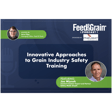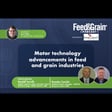Become a Creator today!Start creating today - Share your story with the world!
Start for free
00:00:00
00:00:01

Getting the most out of micro ingredient systems
In this episode of the Feed & Grain Podcast, host Steven Kilger, managing editor of Feed & Grain Magazine, talks with Brady Gaalswyk, co-president and 2nd generation owner of Easy Automation. The discuses micro ingredient systems, from how they improve feed mill efficiency, how big they can get, when they aren’t the best option for an ingredient and new technology that can make them more accurate and save employees more time.
Podcast sponsored by Pneumat Systems.

















